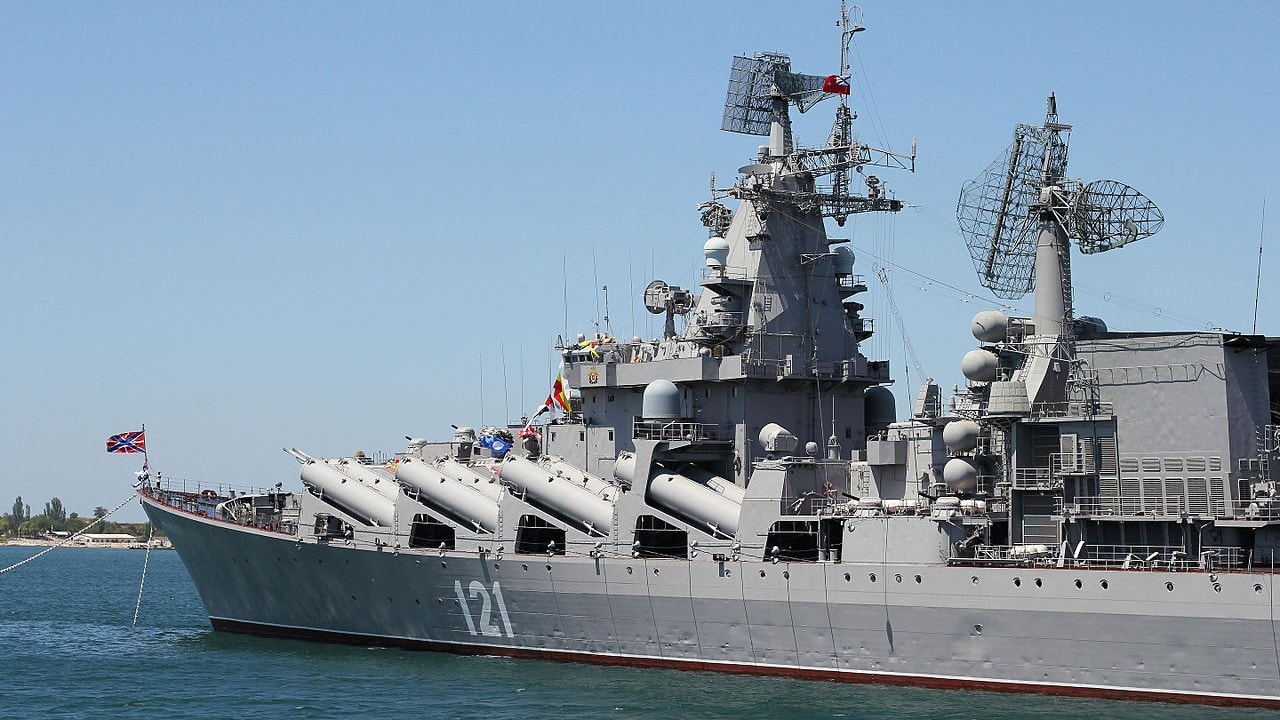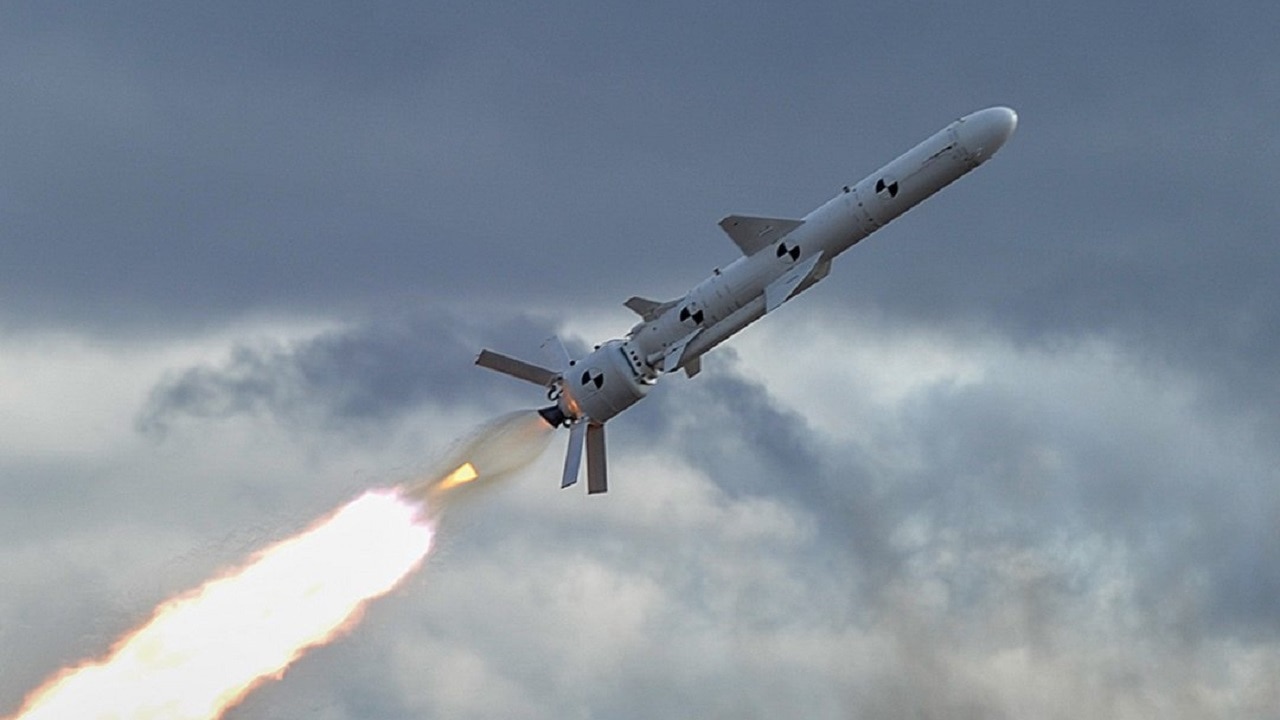On March 15, 2025, Ukrainian President Volodymyr Zelensky confirmed the first successful test of a new variant of the R-360 Neptune anti-ship missile.
The new modification of this missile that—originally designed in Ukraine years before the war—now gives it a range of more than 600 miles, making it capable of reaching Moscow.
The Neptune missile’s originally-conceptualized mission beginning in 2016 was as an anti-ship missile. The initial intention was for it to defend the Black Sea coastline against what were envisioned attacks from the Black Sea by the Russian Navy (VMF).
Its most high-profile success was in the early stages of the Ukraine-Russia war when the missile was responsible for sinking the VMF Slava-class Black Sea flagship, the Moskva guided missile cruiser, on April 13, 2022. That sinking demonstrated the vulnerability of Russian naval vessels to Ukraine’s coastline defenses.
Once the war continued for months more than initially anticipated, Ukraine industry modified the missile’s design to make it capable of striking targets on land. Those upgrades to the missile’s original seeker now give it an equal level of the precision targeting, comparable to what was once been capable against land-based targets.
Since that time, the missile has been used to destroy a strategic variety of Russian systems. These have included the high-dollar priced Almaz-Antei S-400 air defense system.
The newest variant of the Neptune now marks a major leap forward in Ukraine’s missile design capabilities. With this newly-adapted Neptune missile, the Ukrainian military no longer has to lament over any shortages of the US Army’s ATACMS missile or a cutoff in US military aid. The Neptune can now carry out most of those missions on its own.
Neptune Missile: Design History
The Neptune is a land-based anti-ship missile system developed by Ukrainian industry. It was designed to target and destroy naval warships and coastal infrastructure with precision strikes.
The original Neptune cruise missile, which was initially designed as an anti-ship weapon, has been a lynchpin of Ukraine’s coastal defense strategy since even before the war. Since its introduction, the missile has had an exemplary record of in protecting Ukraine’s littoral waters.
The recent modifications expand the missile’s mission profile well beyond its original design specifications. Up until now the Neptune has been used to also destroy land-based targets. These include military infrastructure sites, command centers, and other installations with strategic value.
The one-time coastline defense weapon now has several times its initial range along with a commensurable increase in accuracy, effectively expanding Ukraine’s strategic reach to well beyond the initial design requirements.
Since The Beginning of the War
The transition of the Neptune missile from a single-mission anti-ship weapon to a versatile multi-target strike system began in April 2023. At the time Ukrainian defense officials publicly stated that a design project was in process to modify the missile’s guidance system and warhead.
These modifications expanded the missile’s engagement envelope so that it could hit both stationary and mobile ground targets and not just targets at sea. This permitted the system to operate across a much broader spectrum.
The missile was fitted with a completely new guidance system. This incorporated satellite positioning to adjust the missile’s trajectory during the cruise phase of flight. In the terminal phase, the final distance to target was going to be controlled by an infrared guidance system

“Moskva” (“Moscow”) (ex-“Slava”, which means “Glory”) is the lead ship of the Project 1164 Atlant class of guided missile cruisers in the Russian Navy. This warship was used in the 2008 Russia-Georgia War. The Black Sea. Sevastopol bay. This photo was taken from a boat.
The complete details of the Neptune’s upgrades remain limited, but it is believed that the guidance system of the missile has been re-engineered to accommodate a wider array of target types, including military infrastructure, air defense systems, and logistical hubs.
More significantly, the range of the missile has been extended to 1,000 kilometers, providing Ukrainian forces with the ability to strike deep into Russian-occupied territories, a game-changing development in the ongoing conflict.
When the missile was originally designed, the companies responsible for the program told me that “this system will be responsible for protecting our Black Sea cities against the Russian Navy”. That Russia Navy is now gone—mostly sunk or forced to re-deploy out of the Black Sea.
But the Neptune appears to have the capability to expand well beyond its original design specifications. When Ukrainian weapons increase their strikes deep into Russia—on Moscow as well as against other strategic targets—it will most likely be the Neptune that is the proverbial “tip of the spear.”
About the Author: Reuben F. Johnson
Reuben F. Johnson is a survivor of the February 2022 Russian invasion of Ukraine and is now an Expert on Foreign Military Affairs with the Fundacja im. Kazimierza Pułaskiego in Warsaw. He has been a consultant to the Pentagon, several NATO governments and the Australian government in the fields of defense technology and weapon systems design. Over the past 30 years he has resided in and reported from Russia, Ukraine, Poland, Brazil, the People’s Republic of China and Australia.

